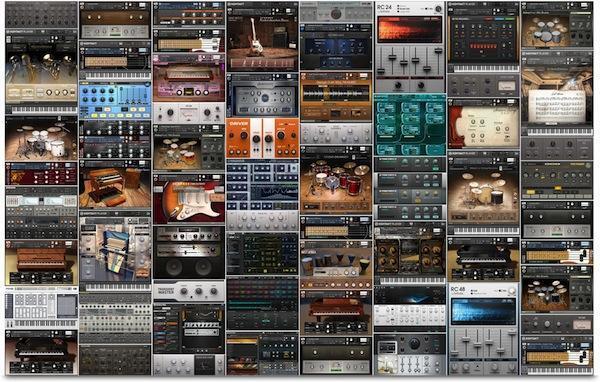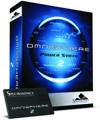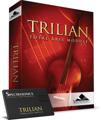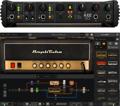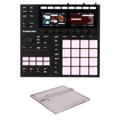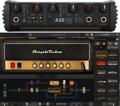How to Choose a Virtual Instrument
If you’re making music with a computer, chances are good that you’ll need to employ one or more virtual instruments to produce the sounds you want. This buying guide spells out the concepts and practicalities involved with using virtual instruments, both in the studio and live onstage. Your Sweetwater Sales Engineer has the knowledge and experience to help you choose the best VI for your needs. Call us at (800) 222-4700.
What is a Virtual Instrument?
Better than the Original
Using Virtual Instruments Live
Types of Virtual Instruments
Dealing with Compatibility Issues
What to Look for in a Virtual Instrument
What is a Virtual Instrument?
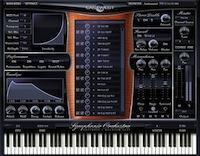 A virtual instrument is a type of software that acts as a sound module. These instruments can be fantastically detailed emulations of vintage keyboards, recreations of analog synthesizers, sophisticated sample players, pianos, orchestral instruments, drum machines, and instruments no one’s dreamed of before. Nearly all virtual instruments act as plug-ins within a DAW host program, though some also offer a standalone mode for live performance. One thing they all have in common is that they use your computer’s CPU and other resources to create sound.
A virtual instrument is a type of software that acts as a sound module. These instruments can be fantastically detailed emulations of vintage keyboards, recreations of analog synthesizers, sophisticated sample players, pianos, orchestral instruments, drum machines, and instruments no one’s dreamed of before. Nearly all virtual instruments act as plug-ins within a DAW host program, though some also offer a standalone mode for live performance. One thing they all have in common is that they use your computer’s CPU and other resources to create sound.
If you’re already familiar with traditional digital keyboards, then it might make sense to think of virtual instruments like this. Digital keyboards are really four pieces of technology in one: a MIDI controller, an audio interface, a computer, and a virtual instrument. The keybed and hands-on controls are the MIDI controller, the I/O is the audio interface, the circuitry of the sound module is the computer, and the program running on that computer is the virtual instrument itself. The beauty of creating a virtual instrument rig is that you get to choose all four components yourself — and you can have as many virtual instruments as you like!
Better than the Original
 Since we’re on the subject of reasons that virtual instruments are so cool, let’s jump right into one of the big ones. Between loop-less sampling and extremely detailed modeling, virtual instruments today sound as good and often times much better than the original synths and keyboards they’re supposed to emulate. But merely cutting out noisy amplifiers and never having to retune your oscillators is just the beginning of what virtual instruments have to offer.
Since we’re on the subject of reasons that virtual instruments are so cool, let’s jump right into one of the big ones. Between loop-less sampling and extremely detailed modeling, virtual instruments today sound as good and often times much better than the original synths and keyboards they’re supposed to emulate. But merely cutting out noisy amplifiers and never having to retune your oscillators is just the beginning of what virtual instruments have to offer.
Synths that were monophonic due to the limitations of their circuitry can have limitless polyphony in their virtual forms, whereas arpeggiators, aftertouch, step-sequencers, and other controls no one dreamed of back in the day are now readily available. What’s more, monolithic analog sounds that once took hours (or days) to program can now be recalled in an instant, saved as a preset, or stored within your DAW’s session file. The very real power of these virtual instruments has inspired many composers to shelve their favorite keyboards forever.
Using Virtual Instruments Live
 One of the greatest advantages of virtual instruments is the astounding sonic power that you can take advantage of in a live setting. Imagine the ability to take a Hammond B3, a Mellotron, an ARP 2600, a Minimoog, a Fender Rhodes electric piano, a Prophet 5, and a Yamaha DX7, not mention to mention a Steinway Grand to your gigs without having to keep a stable of roadies and an 18-wheeler on retainer. All you need is a laptop, a MIDI controller, and an interface.
One of the greatest advantages of virtual instruments is the astounding sonic power that you can take advantage of in a live setting. Imagine the ability to take a Hammond B3, a Mellotron, an ARP 2600, a Minimoog, a Fender Rhodes electric piano, a Prophet 5, and a Yamaha DX7, not mention to mention a Steinway Grand to your gigs without having to keep a stable of roadies and an 18-wheeler on retainer. All you need is a laptop, a MIDI controller, and an interface.
There are few things you’ll want to keep in mind if you want to use your virtual instruments live. First, get a dedicated computer for your instrument rig. It doesn’t matter if it’s a Mac or a Windows PC (provided it can run all of the instruments you want). Simply clear off all the software apps you don’t absolutely need, install your VIs, and use this machine for nothing but live performance.
Then it’s just a matter of finding the right audio interface and a MIDI controller that’s going to provide you with the feel and functions you need. Sound like a lot of work? Don’t worry, your Sweetwater Sales Engineer can help you find the right gear and our service department can build your whole rig for you.
Types of Virtual Instruments
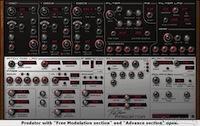 Rather than pigeonholing virtual instruments into two or maybe three categories, it’s far more accurate to say most fall somewhere between synthesis and sample playback. Synthesis starts with a basic building block of sound, such as a tiny sample of a fundamental waveform, and then generates sound by using that building block as the root of an extremely complex calculation. In many ways, this recreates the process of analog synthesis, which starts with an oscillator that’s run through a series of filters and modulation methods to achieve a desired sound. In a computer, this is a processor-intensive operation, which means it requires a lot of CPU power.
Rather than pigeonholing virtual instruments into two or maybe three categories, it’s far more accurate to say most fall somewhere between synthesis and sample playback. Synthesis starts with a basic building block of sound, such as a tiny sample of a fundamental waveform, and then generates sound by using that building block as the root of an extremely complex calculation. In many ways, this recreates the process of analog synthesis, which starts with an oscillator that’s run through a series of filters and modulation methods to achieve a desired sound. In a computer, this is a processor-intensive operation, which means it requires a lot of CPU power.
 Sampling, on the other hand, requires little in the way of CPU power but much more RAM and hard drive storage space. That’s because samples, which are essentially audio files, take up space. The longer your samples are and the higher their bit depth/resolution, the more disk space and memory you’ll need.
Sampling, on the other hand, requires little in the way of CPU power but much more RAM and hard drive storage space. That’s because samples, which are essentially audio files, take up space. The longer your samples are and the higher their bit depth/resolution, the more disk space and memory you’ll need.
Most virtual instruments use a bit of both sampling and synthesis. For example, a really great Rhodes emulation might use full-scale samples as the base sound, but calculate the distortion, modulation, reverb, and amplitude envelope. Neither method of creating sound is inherently superior, and there are comparable virtual instruments (for instance, for acoustic piano) that lean heavily in either direction.
Dealing with Compatibility Issues
It’s important to make sure that the virtual instruments you choose will integrate into your system. Most virtual instruments work on either Mac or Windows PCs, but factors such as CPU type and speed, memory, and hard drive space can be an issue. Most virtual instruments also include various plug-in formats (e.g., VST, AU, AAX, etc.) for compatibility with multiple DAWs, but many don’t include them all. No matter what, always check the system requirements before you buy a virtual instrument.
What to Look for in a Virtual Instrument
Focus or Flexibility?
Are you looking for an instrument that does one specific thing really well (piano, FM synthesis, etc.), or a sample player that comes with a massive library of sounds? Do you plan to create your own original sounds, or will you rely mostly on preset sounds? What about incorporating third-party or add-on sample libraries? Answering these questions will go a long way toward figuring out what you really need.
How Does it Sound?
A virtual instrument may appear to have all the bells and whistles a composer or sound designer could ask for, but if it doesn’t sound good to you, then you won’t be happy. We highly encourage you to listen to demos and check out videos on the virtual instruments you’re considering, which is why you’ll find tons of YouTube videos and embedded audio demos right here at Sweetwater.com.
How is the User Interface?
Nothing jeopardizes your creative flow like a bad UI. Unfortunately, some of the very best sounding virtual instruments aren’t the most user friendly. If you can’t make heads or tails of the layout, then the virtual instrument you’re looking at may not be right for you. Take a look at some screen shots (we usually have several on our site) and check out a video or two.
Can Your System Handle it?
Always check the system requirements to ensure compatibility with your OS and DAW before you buy a virtual instrument. You’ll also want to ensure that you have enough processing power, memory (RAM), and disk space available. If you’re right on the line, then you’ll probably be able to run one instance of this virtual instrument, but multiple instances might be out of reach for your machine.
How Will This Instrument Fit in Your Rig?
If you want to tweak your VI’s parameters from a MIDI controller, find out if the plug-in has a learn function that makes mapping to your hardware controller easy. If you’re making a move from hardware to software, a dedicated controller will make the transition a smooth one. Some VI makers even offer dedicated hardware controllers that emulate the interface of the original synth.
Understanding these concepts should make it easier for you to evaluate and choose the best virtual instruments to suit your needs and tastes. As always, a call to your Sweetwater Sales Engineer at (800) 222-4700 will help answer any questions you might have. Here’s hoping you’ll have a rewarding musical experience!


